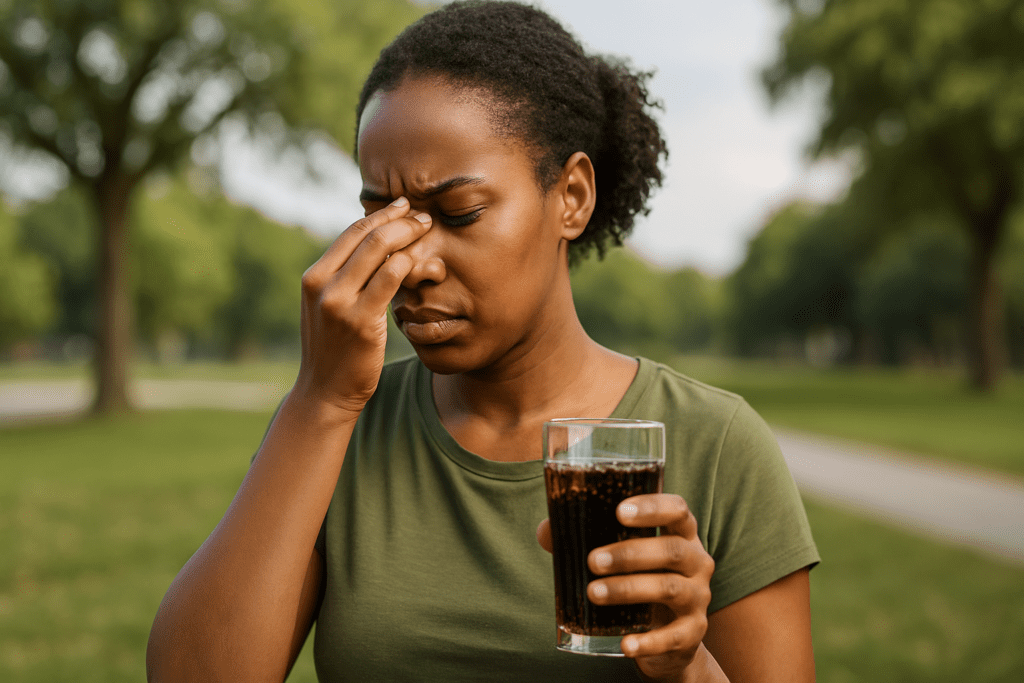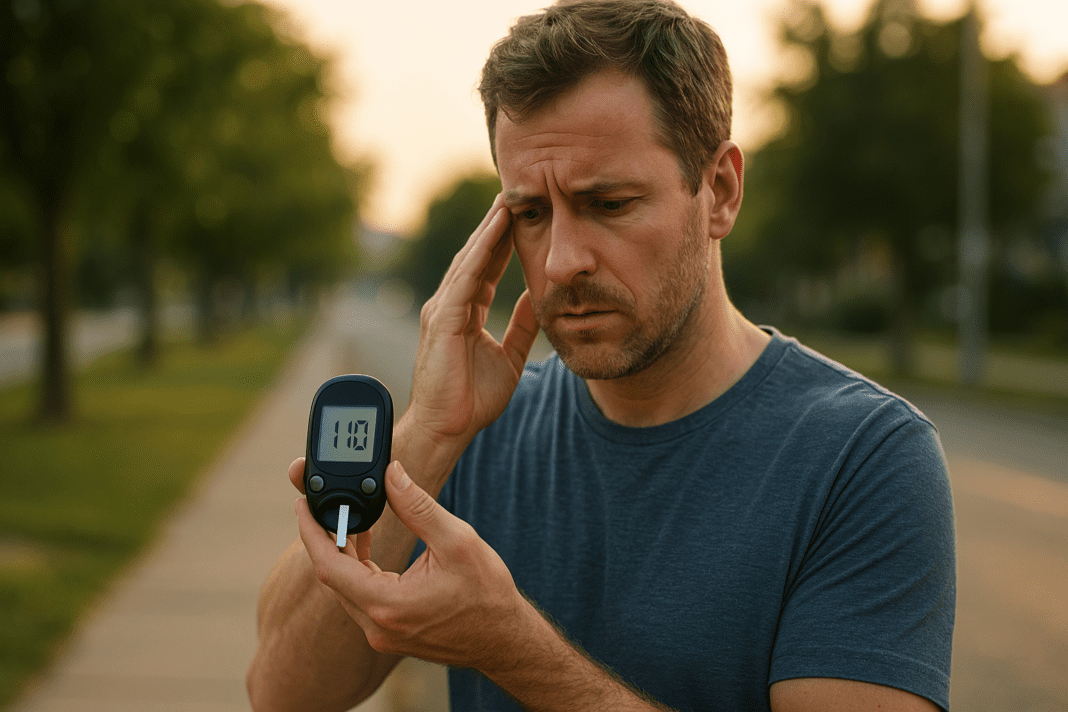Understanding the Connection Between Sugar and Type 2 Diabetes
The relationship between sugar consumption and type 2 diabetes has long sparked public health debates and scientific inquiry. While sugar is not the sole cause of diabetes, mounting research has illuminated its substantial role in elevating risk, particularly when intake is excessive or chronic. Modern diets, especially in Western societies, are inundated with added sugars—often concealed in processed foods and sugary beverages. This prevalence has prompted researchers and clinicians alike to examine how much sugar to get diabetes 2 risk to rise meaningfully and what dietary thresholds may contribute to the onset of insulin resistance and metabolic dysregulation.
You may also like: Breakthroughs in Current Diabetes Research: What the Latest Studies Reveal About Treatment and Prevention
Sugar, in its many forms, can influence how the body processes insulin. The pancreas releases insulin to help cells absorb glucose for energy. When there’s too much sugar in the bloodstream over time, the body’s cells can become less responsive to insulin—a condition known as insulin resistance. This resistance is one of the key mechanisms that underlie the development of type 2 diabetes. Understanding how much sugar consumption is too much and how this threshold is determined remains a focal point of current research.
Defining “Too Much”: What Science Says About Sugar Thresholds
While there’s no single, universal answer to the question of how much sugar is too much, public health authorities offer guidelines that help frame the discussion. The American Heart Association (AHA) recommends that women consume no more than 25 grams (about 6 teaspoons) of added sugar per day and men no more than 36 grams (about 9 teaspoons). These recommendations are grounded in epidemiological data linking high sugar intake with increased risks for obesity, cardiovascular disease, and type 2 diabetes.
However, these guidelines are not cutoffs for safety but rather targets for optimal health. Studies show that people who regularly exceed these levels, especially those consuming sugar-sweetened beverages, tend to have higher fasting blood glucose levels and an elevated risk for developing insulin resistance. Therefore, while it’s difficult to pinpoint exactly how much sugar to get diabetes 2 risk to increase, consistent overconsumption is clearly detrimental. Notably, excess sugar intake doesn’t have to be dramatic to begin exerting harmful effects—small but chronic elevations above recommended levels can contribute to long-term metabolic consequences.

Does Sugar Cause Type 2 Diabetes? Parsing Correlation from Causation
A critical aspect of the scientific discourse revolves around whether sugar directly causes type 2 diabetes or merely contributes to a broader set of risk factors. The phrase “does sugar cause type 2 diabetes” often oversimplifies a multifactorial condition. While sugar consumption alone is unlikely to singlehandedly result in diabetes, it plays a significant contributory role within the context of overall dietary patterns, physical activity levels, and genetic predisposition.
Large cohort studies have shown a consistent association between high sugar intake—particularly from beverages—and increased diabetes incidence. For example, people who consume one or more sugar-sweetened beverages daily have a significantly higher risk of developing type 2 diabetes compared to those who consume them rarely. Importantly, these findings hold even when controlling for weight, suggesting that sugar has effects beyond just contributing to obesity. It influences liver fat accumulation, oxidative stress, and chronic inflammation, all of which are pathways implicated in the pathogenesis of diabetes.
The Role of Fructose and High-Fructose Corn Syrup
Among the various forms of sugar, fructose has drawn particular scrutiny due to its unique metabolic properties. Unlike glucose, which is utilized by nearly every cell in the body, fructose is primarily metabolized in the liver. When consumed in large amounts—especially in the form of high-fructose corn syrup (HFCS)—it can overwhelm hepatic pathways, leading to the production of fat within the liver (a condition known as non-alcoholic fatty liver disease).
This fat accumulation can interfere with insulin signaling, contributing to insulin resistance. Emerging research has linked high intake of fructose to increased triglyceride levels, impaired insulin sensitivity, and greater risk for type 2 diabetes. While fructose in whole fruits is generally not a concern—thanks to the fiber, vitamins, and slower absorption rate—fructose in processed foods poses a clear metabolic threat when consumed in excess. Thus, evaluating how much sugar to get diabetes 2 risk to rise must also account for the form and context in which sugar is consumed.
Hidden Sugars and Dietary Blind Spots
One of the more insidious challenges in assessing sugar-related diabetes risk is the widespread presence of hidden sugars in everyday foods. Consumers often underestimate their intake, unaware that condiments, salad dressings, breads, yogurts, and even health-branded snacks can harbor significant amounts of added sugars. This discrepancy between perceived and actual intake complicates the public’s ability to make informed dietary decisions.
Studies have shown that individuals who believe they are consuming moderate sugar levels often exceed recommended thresholds simply because they fail to recognize hidden sources. This gap between perception and reality plays a crucial role in the gradual accumulation of excess sugar in the diet. Efforts to improve food labeling and public education are essential to empower consumers to take control of their sugar intake. When it comes to reducing type 2 diabetes risk, it’s not just about avoiding obvious culprits like soda and candy, but also scrutinizing everyday items that quietly contribute to cumulative sugar load.

Insulin Resistance: The Precursor to Type 2 Diabetes
Insulin resistance is the critical metabolic defect that precedes type 2 diabetes. It occurs when the body’s cells no longer respond effectively to insulin, requiring more of the hormone to manage blood glucose levels. Over time, the pancreas becomes overburdened, and blood sugar levels begin to rise uncontrollably. High sugar consumption is a known catalyst for this cascade, especially when it leads to chronic spikes in blood glucose and insulin levels.
Research shows that individuals with diets high in refined carbohydrates and added sugars exhibit increased markers of insulin resistance. These effects are compounded when sugar intake is paired with low physical activity or genetic susceptibility. While insulin resistance can be reversed or delayed through lifestyle interventions, persistent overconsumption of sugar significantly accelerates the trajectory toward diabetes. This underscores why the question of how much sugar to get diabetes 2 risk to escalate must be contextualized within long-term patterns of metabolic stress.
Obesity, Sugar, and the Diabetes Triad
The link between obesity and type 2 diabetes is well-established, and sugar plays a central role in this triad. Excess sugar intake contributes to weight gain by promoting fat storage, increasing appetite, and disrupting hormonal signals related to satiety. People who consume high levels of added sugars are more likely to have central adiposity—fat stored around the abdomen—which is particularly harmful to metabolic health.
What complicates the relationship further is that not all people who develop type 2 diabetes are obese, and not all obese individuals develop diabetes. However, sugar’s role in promoting fat accumulation and insulin resistance bridges the two conditions in many cases. Recent studies also suggest that visceral fat—the fat that wraps around internal organs—is strongly influenced by diets high in sugar, and this type of fat is particularly associated with metabolic dysfunction.
What Do Global Guidelines Recommend?
International health agencies have issued varying but largely consistent guidelines to address sugar-related health risks. The World Health Organization (WHO) recommends limiting added sugars to less than 10% of total daily caloric intake, with further benefits observed when reduced to below 5%. These recommendations aim to reduce the burden of obesity and noncommunicable diseases like type 2 diabetes.
Despite these guidelines, global sugar consumption remains high, particularly in countries where ultra-processed foods dominate the food supply. Public health strategies to reduce sugar intake have included soda taxes, mandatory front-of-package labeling, and consumer education campaigns. Still, compliance and awareness remain uneven. The question of how much sugar to get diabetes 2 risk to increase must therefore be addressed not only at the individual level but also through systemic efforts to reshape food environments.
Children, Sugar, and Early Risk Factors
Perhaps most alarming is the increasing evidence that high sugar intake during childhood can set the stage for early onset insulin resistance and type 2 diabetes. Children today are often exposed to sugary foods and beverages from an early age, creating taste preferences and metabolic patterns that persist into adulthood. Pediatric studies have linked high sugar consumption to markers of metabolic syndrome, including abdominal fat, elevated triglycerides, and impaired glucose tolerance.
These findings suggest that early dietary habits have long-term consequences. Intervening during childhood—by reducing exposure to added sugars and promoting whole, unprocessed foods—may offer a powerful lever to combat the diabetes epidemic. Educating families about the less obvious sources of sugar in children’s diets, such as flavored yogurts, fruit juices, and processed snacks, is critical for prevention efforts.
The Glycemic Index and Glycemic Load: Not All Carbs Are Equal
When considering the diabetes risk associated with sugar, it’s important to understand the concepts of glycemic index (GI) and glycemic load (GL). The glycemic index measures how quickly a carbohydrate-containing food raises blood glucose levels, while glycemic load accounts for both the quality and quantity of carbohydrates. High-GI foods, such as sugary cereals and white bread, cause rapid spikes in blood sugar, which can strain insulin response mechanisms.
Low-GI foods, like legumes and whole grains, have a slower impact on blood glucose and are generally more favorable for metabolic health. Diets that emphasize low-GI foods are associated with improved insulin sensitivity and reduced type 2 diabetes risk. Therefore, focusing solely on total sugar content without considering the overall glycemic impact of the diet can be misleading. It’s not just about asking, “does sugar cause type 2 diabetes,” but also about recognizing how carbohydrate quality shapes metabolic outcomes.
Practical Strategies to Reduce Sugar Intake
Reducing sugar intake doesn’t necessarily mean eliminating all sweet flavors from the diet. Instead, it involves a shift toward mindful consumption and strategic substitutions. Swapping sugary beverages for water, unsweetened teas, or naturally flavored sparkling water is an effective starting point. Cooking more meals at home allows for better control over ingredients, making it easier to limit added sugars.
Reading nutrition labels and becoming familiar with terms that indicate added sugars—such as dextrose, maltose, and syrups—can empower consumers to make healthier choices. Additionally, gradually retraining the palate to appreciate less sweet foods can reduce sugar cravings over time. These strategies are especially relevant for individuals asking how much sugar to get diabetes 2 risk to decrease through diet. By making incremental changes, individuals can significantly lower their long-term risk.
Personalized Nutrition and Genetic Factors
Not everyone processes sugar in the same way. Genetic predispositions, microbiome composition, and even sleep patterns can influence how the body responds to sugar intake. For example, some individuals may be more prone to insulin resistance due to inherited variations in genes involved in glucose metabolism. This explains why two people consuming similar amounts of sugar may have vastly different health outcomes.
Personalized nutrition—an emerging field that tailors dietary recommendations based on individual genetic, metabolic, and lifestyle factors—offers promising avenues for diabetes prevention. For those wondering whether or not sugar causes type 2 diabetes, personalized assessments can help determine individual susceptibility and guide more targeted dietary interventions.

Frequently Asked Questions: Sugar Intake and Type 2 Diabetes Risk
1. Can occasional sugar indulgence still increase my risk of type 2 diabetes?
Yes, even occasional indulgence in high-sugar foods can have long-term implications if it becomes habitual or if your overall diet is already borderline in terms of metabolic health. While a single dessert or sweet drink won’t immediately trigger disease, it contributes to your cumulative glucose exposure over time. Understanding how much sugar to get diabetes 2 risk to rise is about more than daily totals—it’s about your overall metabolic resilience and your body’s ability to recover from glucose spikes. People with prediabetes or a family history of type 2 diabetes are especially vulnerable to these fluctuations. Over time, even small indulgences, if frequent enough, can erode insulin sensitivity and push you toward a higher risk profile.
2. Does sugar cause type 2 diabetes more in sedentary individuals than in active ones?
Research suggests that physical activity acts as a powerful buffer against the harmful effects of sugar. When you exercise regularly, your muscles become more efficient at using glucose, which helps maintain insulin sensitivity. For sedentary individuals, the threshold of how much sugar to get diabetes 2 symptoms to begin may be significantly lower than for those who are active. In other words, sugar metabolism is heavily influenced by how much you move. This doesn’t mean active people are immune, but it does mean lifestyle habits must be considered when assessing whether sugar causes type 2 diabetes in your specific case.
3. What role does sleep play in sugar metabolism and diabetes risk?
Poor sleep patterns—both in quality and duration—can significantly impair glucose regulation and insulin function. Studies have shown that even short-term sleep deprivation reduces insulin sensitivity and increases cravings for high-sugar foods. This can set off a vicious cycle: you sleep poorly, crave sugar for quick energy, and that excess sugar, in turn, disrupts your hormonal balance even further. Understanding how much sugar to get diabetes 2 complications to manifest requires acknowledging these indirect contributors. So while sugar is part of the story, poor sleep makes its effects more pronounced and more dangerous over time.
4. Are natural sweeteners like honey or agave safer for preventing diabetes?
Natural sweeteners are often marketed as healthier alternatives, but they still contain fructose and glucose, which affect blood sugar levels. In fact, agave syrup contains a higher concentration of fructose than table sugar, which may have more harmful metabolic effects when consumed in large amounts. The assumption that “natural” equals “safe” can be misleading when considering whether sugar causes type 2 diabetes or not. From a physiological standpoint, the body still processes these sweeteners in ways that can contribute to insulin resistance if consumed excessively. The key is moderation, not substitution, and understanding total sugar exposure is essential regardless of the source.
5. How can cultural eating patterns influence diabetes risk related to sugar?
Cultural dietary habits significantly affect how much sugar to get diabetes 2 trends to emerge in specific populations. For instance, some cultures rely heavily on sweetened teas, desserts, or refined grains that convert quickly to sugar in the bloodstream. Additionally, communal celebrations often center around carbohydrate-rich meals, leading to intermittent surges in sugar consumption. Public health initiatives that aim to lower diabetes incidence must consider these culturally embedded behaviors. Educational efforts tailored to specific communities are essential to ensure that the message about whether sugar causes type 2 diabetes reaches people in contextually meaningful ways.
6. Are there any emerging technologies that help monitor sugar’s impact on the body?
Yes, continuous glucose monitors (CGMs) are becoming more accessible and can provide real-time feedback on how your body responds to different types and amounts of sugar. These devices are no longer limited to people with diabetes—they’re being used by health-conscious individuals to optimize diet and prevent metabolic disorders. By tracking how much sugar to get diabetes 2 indicators such as blood glucose variability to shift, CGMs help people make personalized dietary choices. This real-world biofeedback allows users to see how sleep, stress, and sugar interact in their own metabolism. As the tech becomes more widespread, it may offer a proactive way to manage diabetes risk before it manifests clinically.
7. How does chronic stress influence the body’s response to sugar?
Chronic stress triggers hormonal shifts—particularly elevated cortisol—that increase blood glucose levels even in the absence of food. When this hormonal environment is combined with high sugar intake, the body’s ability to regulate glucose becomes compromised. This synergistic effect makes it easier for someone under stress to cross the threshold of how much sugar to get diabetes 2 markers like insulin resistance to develop. Stress also promotes emotional eating, often leading to increased consumption of sugary comfort foods. Therefore, managing stress is a critical, often underappreciated component of preventing sugar-induced metabolic dysfunction.
8. Can gut health affect how the body handles sugar and diabetes risk?
Yes, gut microbiota play a pivotal role in metabolic health, including how we process sugar. Certain bacteria help modulate glucose tolerance and inflammation, while others may worsen insulin resistance when they become dominant. Dysbiosis—a disruption of the normal microbial balance—has been associated with increased risk of obesity and diabetes. When evaluating how much sugar to get diabetes 2 mechanisms to initiate, poor gut health may lower that threshold significantly. Probiotics, fermented foods, and dietary fiber are tools that can support gut diversity and help mitigate sugar’s adverse effects.
9. What are some subtle early signs that sugar may be harming your metabolic health?
Before full-blown diabetes develops, early symptoms may include persistent fatigue after meals, difficulty losing weight, frequent sugar cravings, and episodes of brain fog. These signs are often dismissed or attributed to lifestyle busyness, but they may reflect early-stage insulin resistance. Tracking these indicators can help individuals assess how much sugar to get diabetes 2 progression to begin subtly over time. Regular lab tests showing elevated fasting glucose or hemoglobin A1c, even within “normal” ranges, can also be red flags. Paying attention to how your body feels after consuming sugar is an essential and often overlooked diagnostic tool.
10. Will sugar taxes and food labeling policies actually help reduce type 2 diabetes?
Evidence from countries that have implemented sugar taxes shows a modest but measurable reduction in consumption of sugary beverages. These policies make high-sugar products less accessible and more expensive, nudging consumers toward healthier alternatives. More importantly, they raise awareness of how much sugar to get diabetes 2 outcomes to escalate across a population. However, labeling transparency is just as critical—knowing what’s in your food empowers informed decision-making. When combined with education and access to healthier options, these policy tools can contribute meaningfully to reducing the prevalence of type 2 diabetes linked to sugar intake.
Conclusion: Rethinking Sugar and Protecting Against Type 2 Diabetes
The question of how much sugar is too much cannot be answered with a single number, but the weight of scientific evidence clearly indicates that excessive sugar intake plays a significant role in increasing type 2 diabetes risk. While sugar itself may not directly cause the disease in isolation, it functions as a powerful accelerant within the complex web of metabolic dysfunctions that characterize diabetes. The conversation must move beyond simplistic blame to a nuanced understanding of how sugar interacts with lifestyle, genetics, and broader food systems.
For those concerned about how much sugar to get diabetes 2 risk to escalate, the key lies in adopting a proactive, informed approach to dietary choices. Recognizing hidden sugars, reducing sugary beverage consumption, and emphasizing whole, low-GI foods can all contribute to meaningful risk reduction. Likewise, framing the question “does sugar cause type 2 diabetes” within a broader narrative of cumulative dietary impact helps illuminate the multifactorial nature of this global health challenge. As research continues to evolve, one truth remains clear: conscious sugar reduction is a potent tool in the fight against type 2 diabetes, and one that starts with everyday choices at the table.
added sugars and diabetes risk, insulin resistance symptoms, blood sugar spikes, glycemic load impact, metabolic syndrome prevention, hidden sugars in food, sugar and obesity connection, fructose metabolism effects, dietary guidelines for diabetes, sugar intake recommendations, early signs of diabetes, sugar and inflammation, non-alcoholic fatty liver and sugar, sugar-sweetened beverages health risks, glucose monitoring trends, personalized nutrition for diabetes, gut health and insulin resistance, lifestyle changes to prevent diabetes, childhood sugar consumption, sugar taxes and public health
Further Reading:
Does Eating Too Much Sugar Cause Diabetes?
Can you get diabetes from eating too much sugar?
Disclaimer
The information contained in this article is provided for general informational purposes only and is not intended to serve as medical, legal, or professional advice. While MedNewsPedia strives to present accurate, up-to-date, and reliable content, no warranty or guarantee, expressed or implied, is made regarding the completeness, accuracy, or adequacy of the information provided. Readers are strongly advised to seek the guidance of a qualified healthcare provider or other relevant professionals before acting on any information contained in this article. MedNewsPedia, its authors, editors, and contributors expressly disclaim any liability for any damages, losses, or consequences arising directly or indirectly from the use, interpretation, or reliance on any information presented herein. The views and opinions expressed in this article are those of the author(s) and do not necessarily reflect the official policies or positions of MedNewsPedia.


